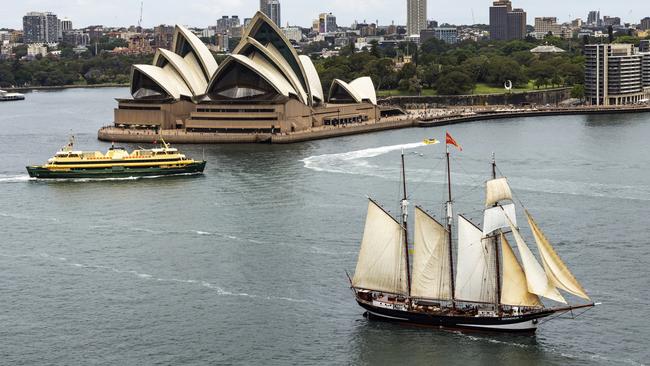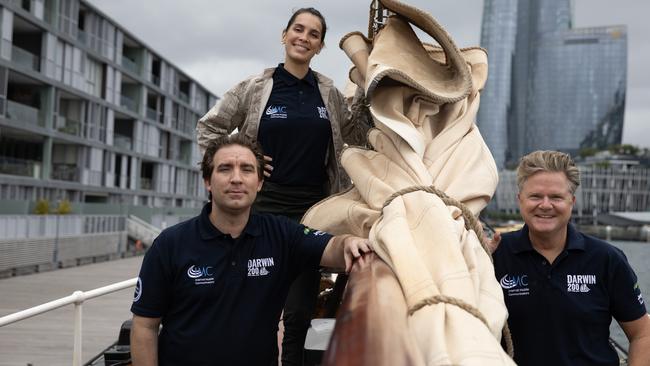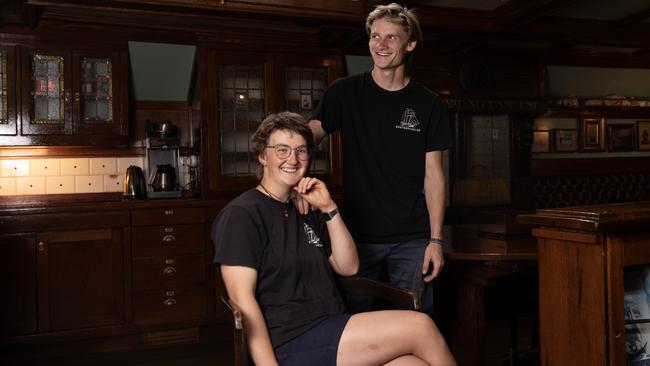Darwin’s voyage charts the path for conservation 200 years on
As modern conservationists grapple with a changing world, a crew of intrepid sailors seek to rechart the path laid by Charles Darwin, leading them to Sydney.

As the Dutch tall ship Oosterschelde sailed into Sydney Harbour, it followed the wake of Charles Darwin’s voyage on the Beagle almost 200 years earlier, bringing with it a mission of conservation.
Her arrival marks a turning point in a mammoth journey, with the vessel currently retracing its way around the world on the path set by Darwin and Captain Robert FitzRoy almost two centuries earlier. Chartered by British naturalist Stewart McPherson, the arrival in Sydney marks a homecoming for him, having settled in Australia years earlier.
The Oosterschelde departed from Plymouth Harbour in Britain in August 2023 hoping to spark the same curiosity the Beagle provided for a young Darwin, who spent five years on the ship aged just 22 from 1831.
The voyage of the Beagle marked a formative period for the young Darwin, during which his theory of evolution came into gestation.

Arriving in January, 1836, the Sydney he encountered was an equally formative city. Here he studied the changing ecology of a country that had been untouched by colonisation until recently and charted the impact of introduced species.
Critical to his later theory was observation of how the native landscape and species adapted to the hasty introduction of European colonisation.
The voyage of the Oosterschelde skews modern in its mission, now focusing on the effects of plastic upon the oceans and species Darwin examined.
Along its journey, the 106-year-old, three-masted sailing ship will be host to 200 young environmentalists from 200 countries, each of whom has made or will make it their mission to track the conservation of a particular endangered species and chart a way forward for its survival.
The project, dubbed Darwin 200, is past its halfway mark, now bracing on Sydney’s shores ahead for a difficult last leg.
“We’ve got about another nine months or so still to go, and we’re going to every major port that Charles Darwin visited, including, of course, your beautiful city of Sydney, where Darwin spent several weeks and explored the Blue Mountains,” Mr McPherson said.
“Our time in Sydney holds deep personal significance, as it’s not just a homecoming but also a vital step in our mission and efforts to showcase Darwin’s important discoveries and adventures in Australia.

“We will also be looking at how the natural landscape has changed over the last two centuries, and we have an incredible range of Darwin Leader projects planned to enable young people from across the world to learn from many of Australia’s most inspiring conservation initiatives.”
While in Sydney, Mr McPherson and the crew of the Oosterschelde will engage with six conservation projects while logging air and sea temperatures.
For Venezuelan explorer and Darwin200 leader Karen Brewer it’s the journey of a lifetime. “The best thing that I’ve learned from this project is that we can only do this all together, working together to accomplish this and to share it with the world,” she said.
In Brazil she joined a project aimed at safeguarding the last small and almost extinct Golden Lion Tamarins.
For the youngest crew member, 19-year-old Daan Van Roosmalen, it was his first time sailing at sea.
“I’ve been sailing all my life, but on ships like this at sea, only two years,” he said.
“The fact that it’s still traditional sailing means really we’re all doing it together. We don’t have winches. We do it all by hand. We need each other to do it, and without each other, we cannot manage.”
As Darwin once did, crew members will use the Sydney sojourn to prepare for the final months of Bass Strait sailing to Hobart before going to Christchurch, Cape Horn and beyond.
Partly funding the journey is the opportunity for members of the public to come aboard for any of the 32 legs upon the journey, eight of which remain. Prices ranged from $700 to $10,000 per person.



To join the conversation, please log in. Don't have an account? Register
Join the conversation, you are commenting as Logout